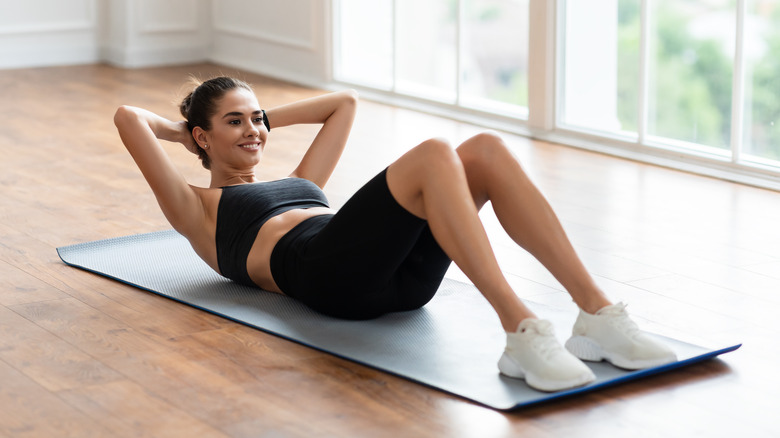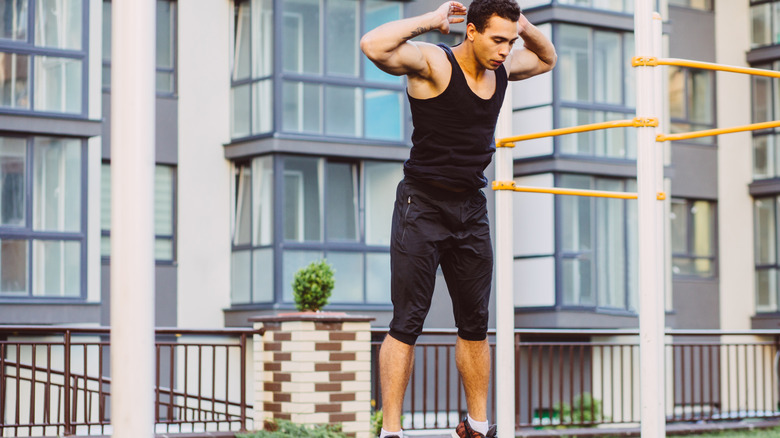Why You Should Add Reverse Burpees Into Your Workout Routine
Love them or hate them, burpees are a great cardio exercise that can help get your heart rate up and engage your entire body. According to Bustle, traditional burpees usually involve starting from a standing position and moving into a push-up position before standing back up again. As a result, traditional burpees can give you a full-body workout while also targeting your upper body area, like your shoulders and core region.
Reverse burpees, on the other hand, can have the opposite effect. Since reverse burpees involve rolling on your back and settling into a crunch position before jumping back up again, they tend to target your lower body muscles, including your glutes, quads, and hamstrings. Oscar Colon IV, a certified personal trainer and founder of fitness studio MTHD by Oscar, told Bustle that the rolling motion in reverse burpees uses "momentum to target multiple muscle groups at once" — including your core.
How to do reverse burpees
To correctly perform a reverse burpee, stand with your feet shoulder-width apart and your arms extended over your head. Then, slightly bend your knees and lower your butt onto the floor in a controlled motion (via Popsugar). After that, you should roll onto your back and bring your knees up to your chest, using this momentum to kick your legs forward and roll back onto your feet and into a standing position.
When you rise to stand, be sure to jump straight up into the air, keeping your elbows bent and your palms off of the ground as you rely on your core muscles to help lift your body off the floor. If you're still a beginner, start off with a set of 10 reverse burpees in a row. After you've mastered this motion, you can challenge yourself by performing as many reverse burpees as you can within the span of a minute.
Benefits of reverse burpees
According to Well+Good, there are quite a few benefits associated with reverse burpees. That's because reverse burpees are a vigorous cardio exercise that can give you a low-impact, full-body workout. For instance, reverse burpees can help challenge your cardiovascular system and engage the muscles in both your upper and lower body. "Reverse burpees are so good for adding a cardio option to strengthen glutes and core for healthy knees and a low back," Pilates instructor Brian Spencer told Well+Good. As it turns out, they can also help enhance your balance and coordination.
Since reverse burpees require you to learn a new and complex pattern of movements, they can help fine-tune your motor skills. However, doing reverse burpees the wrong way can lead to injury. That's why it's essential to pay attention to your form. One important thing to watch out for is your knees. If you notice your knees buckling as you lower yourself to the ground, you should stop and start over. This is a sign that you are not performing reverse burpees safely or correctly and continuing to do so could cause damage to your ankles.



